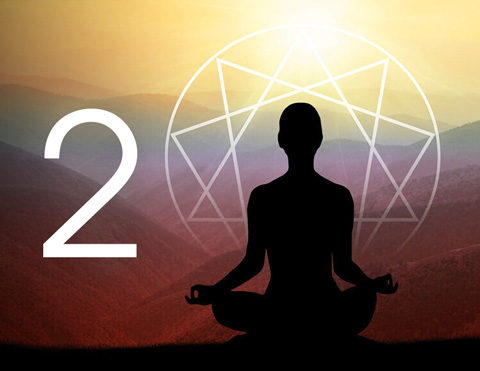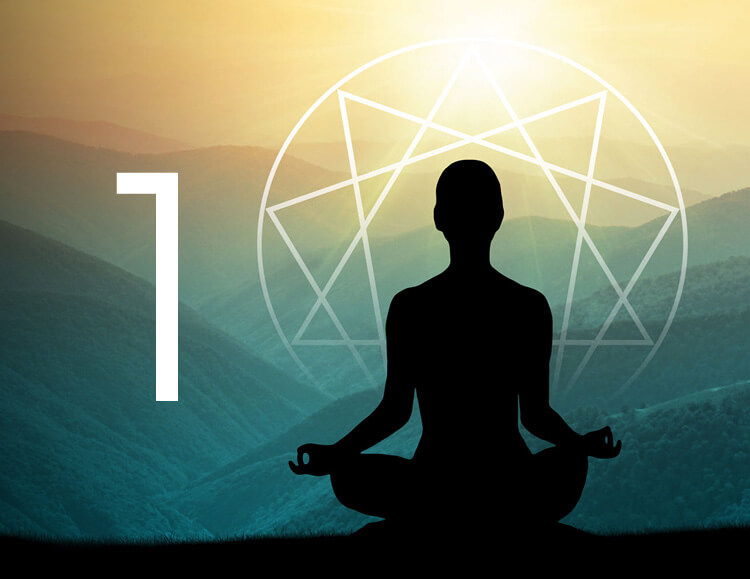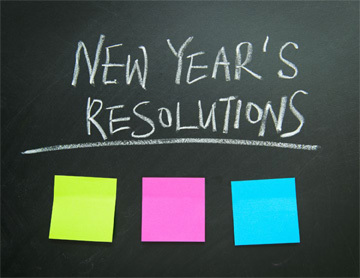Mindfulness is a key development strategy for individuals and leaders in their quest to cope, thrive and compete in a fast-paced, agile world – and yet mindfulness practices, such as meditation, may not come easily to some of us! Casper Oelofsen offers specific strategies to overcome the hurdles experienced when practicing mindfulness techniques, for each Enneagram type.
The very important question raised is: Do you want to focus better on that spreadsheet, in those important meetings or to be more present with the people in your life? Easy! We have heard that meditation is the key to finding an inner focus and calmness which permeates through us into our environment and interactions with others… But if sitting down and focusing on your breath is all it takes to gain this focussed attention and live life more in the moment, then why aren’t more of us doing it?
| Type | |
|---|---|
|
|
Experience the bliss of letting go |
|
|
Spending time/energy with Self |
|
|
Realising the benefits of Being |
|
|
Feeling grounded |
|
|
Realising the wisdom of/in a direct experience |
|
|
Experiencing the safety in Feeling/Being |
|
|
Realising the excitement/joy/opportunity in the ordinary |
|
|
Experiencing the strength of not being in control |
|
|
Getting in touch with the harmony within |
Based on his own experience and research from over 10 years of mindfulness based interventions in the Corporate World, Casper has found that by understanding what is blocking you from ‘finding your backside in the meditation seat’, allowing you to accept this barrier rather than push against it, takes you to a realisation of ‘I can do this’. In his programmes on Mindful Leadership, Casper uses a combination of the Enneagram and Mindfulness based applications with great success and he has witnessed and measured significant positive changes in the EQ levels of participants.
Casper describes mindfulness as “experiencing the exquisite vividness of this moment, non-judgementally”. What most of us do, however, is unconsciously avoid being present as we’re making sense of the past and planning for the future. Could it be that life feels like it is racing past us because we are not paying attention? Meditation is for the brain what the push-up exercise is for the body. It is the ‘Mother Tool’ of awareness to allow for the ability to pause and reflect. It helps you to ‘anchor’ into the now.
Claudio Naranjo’s reflections on meditation:
- Safe way of experiencing no-body or no-thing
- Relinquish personality / our Type
- 1st step of experiencing who we really are
- Psychotherapy is a meeting point between 2 people with transparency
- Meditation is also a meeting point between 2 people: the real self and the idealised self
- Enneagram assist us in meeting the other without losing the self or seeing the self in the other
However, it’s not a one size fits all for all Types…
Describing the Enneagram as a self-awareness experience and coupling this with mindfulness practices, Casper brings the art of meditation into the grasp of every Enneagram Type.
“When an individual has an increased ability to respond (rather than react) it becomes much easier to apply the Enneagram wisdom, for example, the lines of integration are easier to access. The wisdom of the Enneagram only gets unlocked when we can “catch” ourselves (re) acting out our auto-pilot Enneagram type behaviours. Only after we have caught ourselves do we have the ability to have the choice to access other Enneagram lenses and respond accordingly”.
-Casper Oelofsen
Discovering the hurdles, remedy and allies of each Enneagram Type brings an awareness of where you or your clients may be getting stuck and what strengths you are equipped with to really submerge yourself in mindfulness practice.
The Hurdles, Remedies and Allies for Each Type.
Enneagram Type  : One of the remedies is to normalise and welcome critical thoughts….
: One of the remedies is to normalise and welcome critical thoughts….
| Hurdles | Remedy (towards the imperfect) | Allies |
|---|---|---|
| Is this right? Values… Religion… | Create space for questions and discuss secular aspects | Perseverance Hardworking |
| Impatience: “Am I doing this right?” | Reminders: There is no right or wrong breath/way | Clarity of focus and attention already developed |
| Over identifying with what's wrong and therefore miss the present | Normalise and welcome impatience and critical thoughts | Idealistic concern for people and causes beyond them |
| Striving for perfection (which does not exist) |
Discuss ‘Perfect’ vs ‘Good enough’ Prepare/Warn re the possibility of feeling anger |
Idealistic concern for people and causes beyond them |
| Fear of experiencing hidden anger | Breathe in: My next breath as it is. Breathe out: My need for the right breath. | Self development is good for the world |
Enneagram Type  : Relationships are key for the Ennea 2, and mindfulness is in relationship to the self….
: Relationships are key for the Ennea 2, and mindfulness is in relationship to the self….
| Hurdles | Remedy (towards self love) | Allies |
|---|---|---|
| Guilt for spending time on myself | Allow permission to spend time with the self | Natural attraction to Love and Kindness |
| Service comes first: I need to teach / help others to do this? | Invite them to assist themselves: How can I help myself to do this? | Generosity with care/ time / energy |
| Sitting for others | Explain how this serves others: Sitting for me…..and therefore to the benefit of others | Meditation is a relationship to the self and others. Relationships are what life is about |
| Difficult to sit with own feelings that arise | Experience feelings as feelings of the collective |
Already gentle and kind hearted Already very good listeners |
| Anxiety when alone and becoming aware of a deep unmet need of love | Breathe in: My own breath. Breathe out: My own breath | Sense of worth comes from the self |
Enneagram Type  :
Welcome (rather than compete against) old habits and explore new ones.
:
Welcome (rather than compete against) old habits and explore new ones.
| Hurdles | Remedy (towards the journey) | Allies |
|---|---|---|
| Linear thinking prevents meditation benefits | Explain outcomes / benefits of “being” | They get things started……bum to the seat |
| The goal is NOT to have a goal | Explain the limitations of goals (driving in the fog) | Enough energy to accomplish something new |
| Doing is the only form of progress | Define process as a result | Very adaptable |
| “Getting it slowly”……is not productive | Give regular reminders of patience. Again and again (with patience) | Optimistic and enthusiastic |
| How can I just be…me… sitting and breathing? (losing the successful self image) |
Welcome (not compete against) old habits and explore new ones Breathe in: The automatic breath (I don’t have to do anything). Breathe out: Doing |
They are loyal to the self. If meditation is what my self needs, I will do it….. |
Enneagram Type  :
A hurdle is that ‘I am my feelings and they change all the time, who am I then?
:
A hurdle is that ‘I am my feelings and they change all the time, who am I then?
Casper finds it extremely helpful as a remedy to give ‘The Guest House’ poem by Rumi to Fours.
| Hurdles | Remedy (towards stepping back) | Allies |
|---|---|---|
| I am my feelings. (Who am I then?) | I am Casper, and currently I am experiencing…. | Their creativity welcomes something new |
| Difficult to observe (and not feel) feelings. | Rumi - Guest House poem | Focused on the self |
| Continuous self referencing. Difficult to step back…. | Regular guided meditations, with lightness in intervals. Dyads allow for referencing of others | Already intuitive and connected to own and collective unconscious |
| A need to always “fall into” deep process. Feeling misunderstood when others can’t go that deep. | Experience the ordinariness and yet beauty of the breath | Attuned to feelings and moods |
| Seeking happiness through pain (enjoying the suffering in meditation) |
Ask them how “observing” their feelings can also enable self development instead of “feeling” the feelings?
Breathe in: Beauty of the breath. Breathe out: My feelings |
Well developed emotional resonance
Fulfilled when in the present |
Enneagram Type  : Observation in mindfulness is not from a distance, you are the experiment. Jump in and analyse afterwards.
: Observation in mindfulness is not from a distance, you are the experiment. Jump in and analyse afterwards.
| Hurdles | Remedy (towards direct experience) | Allies |
|---|---|---|
| I don’t need this. I am the king of observation already. | Observation in mindfulness is NOT from a distance | Attracted to possible wisdom |
| I have always been mindful (observing). | YOU are the experiment. Jump in and analyse afterwards | Seekers of truth |
| I will try this out (experiment first). No participation though… | Information/Wisdom is hidden in the direct experience of mindfulness | Very perceptive. Natural ability to objectively observe |
| I need more information / intellectual security | Mindfulness replenishes on so many levels. However, to charge your batteries you have to be plugged in. | Fair and non judgmental witnesses |
| Confuse disengagement with objectivity |
Breathe in: Energy. Breathe out: Isolation |
Ability to focus on the essence Deep appreciation for solitude Independence is their game |
Enneagram Type  : “If you are not confused, you don’t know what’s going on.”
: “If you are not confused, you don’t know what’s going on.”
| Hurdles | Remedy (towards uncertainty) | Allies |
|---|---|---|
| Am I safe? Who is in the group and who leads it? | Container building is extra important. Group information and leader resume are crucial, beforehand (make use of emails / course material) | Committed to commitments. Loyal to Sit & Repeat |
| Will I be exposed (what is expected from me)? | Share the planned process / agenda / flow beforehand (no surprises) | Already trust their own inner world |
| Lack of certainty. How do I know this will work for me? | Get them to trust that even if this does not work, they will be ok. | Respect for ritual (law and order) |
| Constant need for more information (more certainty) | If you are not confused you don’t know what is going on…. | Cautious and realistic. Start slow…. |
| Very busy mind / racing thoughts |
Normalise busy mind / racing thoughts Breathe in: Trusting the in breath. Breathe out: Fear of no next breath |
Deep need to be in present |
Enneagram Type  : This will remain new. Every sitting is different, feelings don’t have rank, all feelings are good.
: This will remain new. Every sitting is different, feelings don’t have rank, all feelings are good.
| Hurdles | Remedy (towards boredom (feelings)) | Allies |
|---|---|---|
| False starts. This is so exciting (because it’s new), let's start! | This will remain new. Every sitting is different | Keen for new opportunities / gifts |
| Now that we have meditated, what is next? Not willing to do the hard yards. | Feelings don’t have rank. All feelings are good | Ample creativity |
| Ouch… Feelings other than joy just surfaced - I am out! | Boredom is a sign of something new…stay with it |
Visionary. Easy buy into benefits Advocates of growth |
| Only trust excitement. Boredom…is this it?...Let’s move on | Help them focus….back to the breath…..back to the current opportunity | Childlike responsiveness to the NOW |
|
Wow, there are so many opportunities with this. Jump to the next. They get swamped by their stories and miss the realness of meditation |
Breathe in: The new breath. Breathe out: Releasing the old breath | Already intuitive |
Enneagram Type  :They can cut through the noise and get to the real thing
:They can cut through the noise and get to the real thing
| Hurdles | Remedy (vulnerability is strength) | Allies |
|---|---|---|
| I can do this, my way though. | Make sure they know this is NOT easy. Prepare them for pain and vulnerability beforehand | Already self confident. I can do this |
| Let's get on with this and don’t waste time | The body breathes itself, even without our control | Healthy self image. I can face me |
| Frustration of no control. We are not getting anywhere | Redefine vulnerability as a strength | Comfortable with directness / honesty |
| Huge discomfort with arising vulnerability | Normalise (and welcome) pain and discomfort | They can cut through the noise and get to the real thing (the breath) |
| Physical discomfort and pain with sitting |
No pain, no gain Breathe in: Strength. Breathe out: Control |
Energised by challenges Natural enthusiasm |
Enneagram Type  Easy to sit, but slow/distracted to get there
Easy to sit, but slow/distracted to get there
| Hurdles | Remedy (just do it) | Allies |
|---|---|---|
| If I can only get to the sitting… slow to sit | Create Routine & Ritual (Rinse & Repeat) | Value peace and tranquillity |
| Distraction in and around sittings | Get your left brain in charge to get your bum on the seat | Intuitive sense for harmony… when things fit together |
| Once they sit… peaceful… too easy, ”fall asleep” | Emphasize/Start with intention of sitting | Ability to let things unfold in their own way (let the body breathe itself) |
| Unreflective and diffuse activity for yourself | Get a sitting buddy… peer pressure | Open listeners with limited judgements (essence of meditation) |
| Need to run from possible inner disharmony |
Normalise and welcome disharmony Breathe in: Breathing action of the body. Breathe out: Numbness |
Down to earth and no need to impress |
More about the presenter
Casper Oelofsen
holds a Bachelor’s degree in Economic Science (University of Stellenbosch). He is completing his post graduate course in Mindfulness based applications (Faculty of Medicine at the University of Stellenbosch). He completed the Coaching to Excellence course at UCT Graduate School of Business, a course in Process Work facilitation for Transformational Leaders (University of Portland in association with USB) Casper is one of the founding members of Mindful Leadership.
Casper is a registered member of COMENSA (Coaches and Mentors of South Africa), a member of the Neuroleadership Institute based in Sydney Australia, a member of the Institute for Mindfulness in South Africa (IMISA) and a member of The International Regulator of Coaching (ICRM).
To get in touch, please visit the website at www.mindfulleadership.co.zaor contact Casper directly at casper@bethefuture.co.za
This article is based on a presentation from the South African Enneagram Conference 2014, on “The relationship between Enneagram Types and Mindfulness based practices” by Casper Oelofsen. The original presentation review was written by Cherise Nortje in collaboration with Casper Oelofsen.

 What is the Enneagram?
What is the Enneagram?
 Introduction to the 27 Subtypes
Introduction to the 27 Subtypes
 Introduction to the 3 Centers
Introduction to the 3 Centers
 Wings
Wings
 Lines and Integration
Lines and Integration
 Enneagram History & Origin
Enneagram History & Origin
 Enneagram for Myself
Enneagram for Myself
 Enneagram for Practitioners
Enneagram for Practitioners
 Enneagram for Business
Enneagram for Business
 iEQ9 Individual Reports
iEQ9 Individual Reports
 iEQ9 Team Reports
iEQ9 Team Reports
 iEQ9 Questionnaire
iEQ9 Questionnaire
 Training Events
Training Events
 Level 1 iEQ9 Accreditation
Level 1 iEQ9 Accreditation
 Level 2 Enneagram Team Dynamics
Level 2 Enneagram Team Dynamics
 International Enneagram Conference
International Enneagram Conference
 iEQ9 Community of Practice Events
iEQ9 Community of Practice Events
 About Integrative9
About Integrative9
 Meet the Faculty
Meet the Faculty
 Testimonials
Testimonials
 Contact Us
Contact Us





